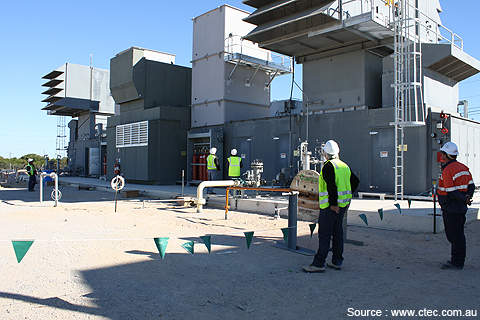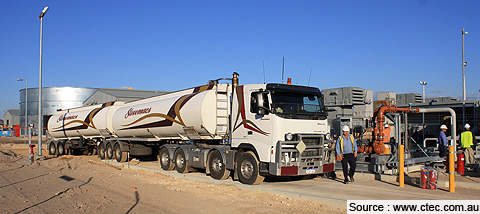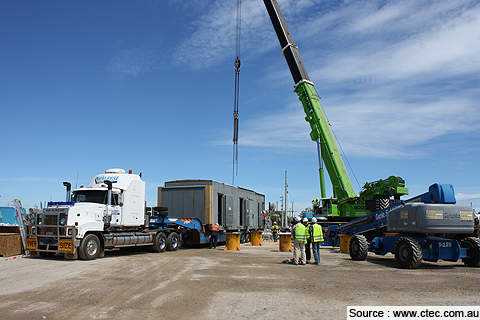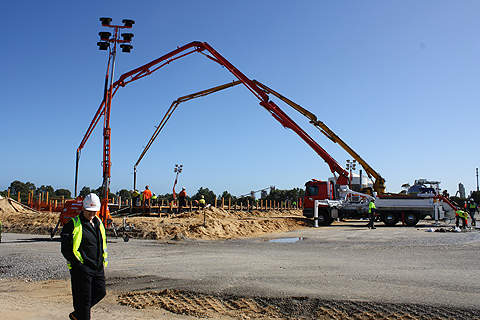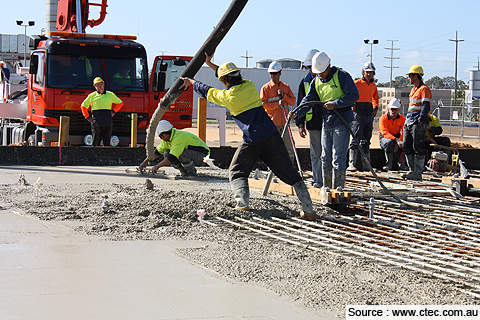The Kwinana Swift Power Plant is a 120MW open-cycle gas turbine plant located in Perth, Australia. It was built by Perth Energy’s subsidiary Western Energy. Construction was completed in August 2010. An investment of $130m was made in the plant.
In May 2011, the first shipment of 50,000l of diesel arrived at the site. First fire at the plant was achieved in June 2011.
Plant details
The plant features two 60MW gas turbines connected to two common generators. The units can reach full load from standstill within five minutes of commencing operations. A high-voltage transformer is also part of the facility.
The gas turbines were supplied by Pratt and Whitney Power Systems (PWPS). The FT8-3 Swiftpac gas turbines have strict requirements regarding the quality of the fuel, which must meet PWPS specifications. The generators were supplied by Brush Electrical.
The plant is currently operating in the open cycle mode but can be readily converted to combined cycle mode if required. It can be run on either natural gas or ultra-low sulphur diesel or both. Natural gas is supplied to the facility through the Dampier Bunbury pipeline.
The first step of electricity generation includes introducing compressed air into the combustor. The fuel, diesel or natural gas is then injected into the combustor and burnt. The combustion process produces a mixture of hot gases, which drives the first turbine.
The hot gas exhaust from this turbine drives a second turbine called the power turbine, which spins the generator to produce electricity.
Nitrogen oxide emissions from the turbine burners are kept under 25ppm using water injection.
The power generated by the facility is transferred to the South West Interconnected System.
Construction
The construction contract for the plant was awarded to CTEC, a company based in Perth. Several configurations were developed three years before the start of construction of the plant to identify the best fit.
Initial works commenced in October 2008. Site mobilisation started in mid-2009. In September 2009, the first concrete was poured on site. About 520m3 of concrete was poured for building the foundation pads for the gas turbines. The foundation pads are held by 30t of reinforced steel. The gas turbines arrived at the site in February 2010 and installed on to the foundations.
All the plant components and other infrastructure were designed, procured and commissioned by CTEC. About 356 workers were involved in the construction. CTEC was also awarded the operations and maintenance contract of the plant.
EMCO was responsible for building the water treatment unit, liquid fuel system, oil storage unit, and related infrastructure.
Areva T&D Australia built a high-voltage switchyard and supplementary transformer/DC system for the plant. Concrete power poles supplied by Rocla were used to build the gantries in the switchyard. The 18km-long power poles feature steel cross-beams, which are more economical than steel truss gantries. The poles were erected by direct embedment, followed by concrete backfill.
The poles supplied by Rocla are made of pre-stressed spun concrete and ideal for electricity transmission. They are more durable and resistant to corrosion and other natural elements.
Technology
The plant is remotely monitored by CTEC using CCTV and an Integrated Controlled Management System (ICMS). CTEC can access the plant controls using the ICMS system and issue the necessary commands remotely in case of an emergency.
Power market
The Swift Power plant was built to supply power to Western Australia. Perth Energy provides renewable energy to several commercial and industrial customers in the area. The new facility will function as a supporting plant to supply electricity during peak periods of demand.
It will also supply electricity during down times of renewable sources of electricity such as wind and solar. While causing a low environmental impact, the plant will add more renewable energy to the grid. It will help the state in reaching the 20% national target of adding more renewable energy to the grid by 2020.

